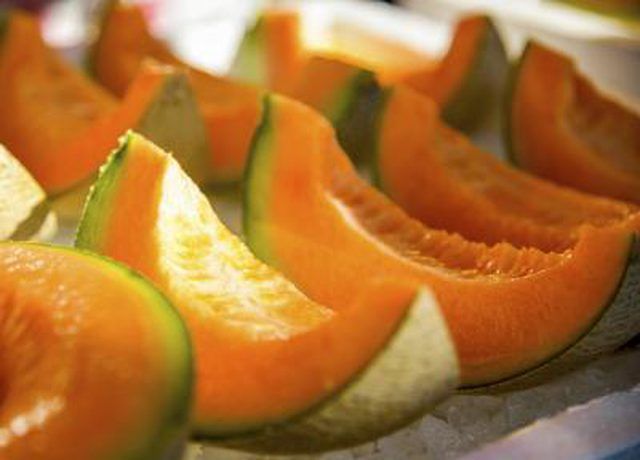Bulbs
Flower Basics
Flower Beds & Specialty Gardens
Flower Garden
Garden Furniture
Garden Gnomes
Garden Seeds
Garden Sheds
Garden Statues
Garden Tools & Supplies
Gardening Basics
Green & Organic
Groundcovers & Vines
Growing Annuals
Growing Basil
Growing Beans
Growing Berries
Growing Blueberries
Growing Cactus
Growing Corn
Growing Cotton
Growing Edibles
Growing Flowers
Growing Garlic
Growing Grapes
Growing Grass
Growing Herbs
Growing Jasmine
Growing Mint
Growing Mushrooms
Orchids
Growing Peanuts
Growing Perennials
Growing Plants
Growing Rosemary
Growing Roses
Growing Strawberries
Growing Sunflowers
Growing Thyme
Growing Tomatoes
Growing Tulips
Growing Vegetables
Herb Basics
Herb Garden
Indoor Growing
Landscaping Basics
Landscaping Patios
Landscaping Plants
Landscaping Shrubs
Landscaping Trees
Landscaping Walks & Pathways
Lawn Basics
Lawn Maintenance
Lawn Mowers
Lawn Ornaments
Lawn Planting
Lawn Tools
Outdoor Growing
Overall Landscape Planning
Pests, Weeds & Problems
Plant Basics
Rock Garden
Rose Garden
Shrubs
Soil
Specialty Gardens
Trees
Vegetable Garden
Yard Maintenance
How to Grow Cantaloupe
How to Grow Cantaloupe. Growing your own [cantaloupe](http://www.ehow.com/info_8392582_types-cantaloupe.html) (Cucumis melo) has many benefits over buying cantaloupe from the grocery store. The best advantage is that you harvest the cantaloupes when they are fully ripe and at their sweetest state. Cantaloupes bought in stores are never fully...

Growing your own cantaloupe (Cucumis melo) has many benefits over buying cantaloupe from the grocery store. The best advantage is that you harvest the cantaloupes when they are fully ripe and at their sweetest state. Cantaloupes bought in stores are never fully ripened when picked and are far less sweet than homegrown cantaloupes. Commercial growers pick cantaloupes before they ripen because they can store them for a longer period of time, up to six weeks, and unripe cantaloupes will remain on the grocery shelves for longer than ripe cantaloupes.
Growing From Seed
Cantaloupe seeds can be bought from most seed suppliers. Do not use seeds that are gathered from store-bought cantaloupes because the cantaloupes are probably grown from hybrid seeds and the seeds will not produce properly, if at all. Seeds can be planted directly into the ground after the last frost. They germinate best in soil that is 70 to 90 degrees Fahrenheit. Seeds are planted 1 inch deep and 2 feet apart, in rows that are 6 feet apart. Plant two to three seeds at each interval. After the seeds have sprouted and have two leaves, thin them out leaving 1 plant for every 2 feet of space.
Transplants
It can take cantaloupe up to 90 days to fully mature. In areas that have a short growing season, transplants are grown to get an early start and can add two to four weeks to the area's growing season. Seeds are planted into pots at a depth of 1 inch. The plants are moved outdoors after they have two to three mature leaves and the outside soil temperature is 65 degrees F or higher. The main problem when sowing transplants outdoors is damaging the roots. Damaged roots will slow the growth of the cantaloupe and the fruit will not reach its full potential. To avoid root damage, it is best to grow seedlings in peat pots that are later planted directly into the soil.
Sun, Soil and Fertilizer
Cantaloupe needs to be grown in full sun -- at least six hours of direct sunlight daily -- in a rich soil, ideally with a pH level between 6.0 and 6.5. Soil should be fertilized with 5-10-10 base fertilizer at 3 pounds per 100 square feet before seeds are planted. After seeds have sprouted and have become a vine, called a "run," plants should be fertilized with calcium nitrate at 2 pounds per 100 feet of row. Fertilize with calcium nitrate a final time after plants have bloomed and fruit begins to develop on the vines.
Water Requirements
Proper drainage is needed so the roots and fruit donít rot. Soil should be kept moist with 1 to 2 inches of water a week. Drip irrigation works best for watering cantaloupe. If you must water plants from above, water in the morning so that the water on the leaves can dry before the sun goes down. If the leaves stay wet overnight, they can develop a foliar disease. During the final week of fruit ripening, only water the plants with 1 to 2 inches of water if their leaves are drooping. Less water during the final ripening of the cantaloupe results in a sweeter fruit.
Harvesting and Storage
It takes 35 to 45 days for the fruit to fully mature after the flower has been pollinated. Cantaloupes are ready to harvest when the skinís netting gets course and the fruit separates from the vine; this is called a slip. Harvest the cantaloupes as soon as they slip from the vine to avoid spoilage. Cantaloupes do not continue to ripen after they are picked, so only harvest them when they are fully ripe. The fruit can be kept in storage at 45 to 50 degrees F for up to two weeks.